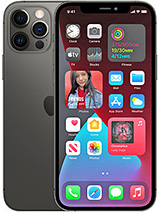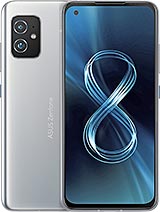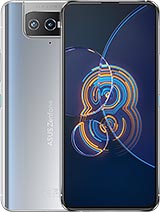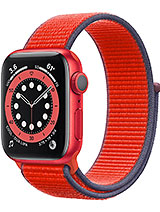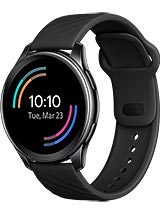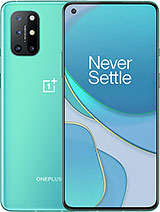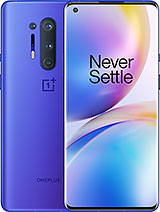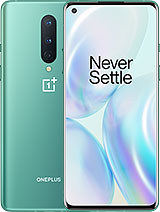iPhone 12 Pro vs Samsung S21 Ultra vs OnePlus 8 Pro vs Google Pixel 5 By Parker Walbeck
Um, what's up YouTube the highly anticipated much wanted patiently waited for smartphone video shootout has arrived. The Google Pixel 5 against the OnePlus 8 pro against the iPhone 12 Pro max against the Samsung s21 ultra. It's about to get real. You guys know us we're a filmmaking channel. We like to stack up equipment pick apart the strengths and the weaknesses and sometimes see how far you can push amateur gear to look professional. So we want to take the four flagship phones of 2021 and see who comes out on top in terms of the best filmmaking tool.
There are so many phones out there, but after asking all of you, these four phones were the most requested and the ones available to us here in the US. We wanted to stack up the new Huawei phone, but unfortunately it's banned here and then right when we bought the OnePlus, they announced the newer one in a few months. Odds are all these phones will be outdated, but for what they are now today, here's our review and FYI. We bought these phones with our own money, so this review is completely unbiased and not sponsored by anyone, and before we get started, we are currently working on a new smartphone video pro mini course, which will be coming out very soon and will be included inside our online course. Full-Time filmmaker full-time filmmaker has grown to over 400 tutorials over 80 hours of content, 18 000 students worldwide and is the perfect guide for every filmmaker to grow their skills and business.
If you want to see our free one hour, webinar that gives you a free preview of the course click. The link below alright. So here is how the shootout is going to work. I'm going to go through 12 categories that are important to me as a filmmaker we'll give the winner of each category three points. Second place will get two points.
Third place will get one point and last place will get zero. We'll add up all the points at the end and decide which phone reigns supreme alright, so our first test is going to be which phone can shoot the highest frame rate in the highest quality. All four phones can shoot 4k at up to 60 frames per second, but the Samsung s21 ultra has the all new specs of shooting 8k in 24 fps, which is insane three years ago. If you told someone your phone could shoot AK footage, you'd be laughed at. So even though it's not the highest frame rate, it is the highest quality by far, so we'll give three points to the Samsung second place, we'll go to the iPhone.
Yes, all these phones can shoot 4k at 30 and 60, but the iPhone has 24, so we'll give it a second for the additional option and the pixel one plus will tie for. Third. Next up is the highest quality, slow motion. All four phones can shoot in 1080p at up to 240 frames per second. As for the quality of these, I said the Samsung and the iPhone come out on top.
The Samsung can also record 960 frames per second in one second bursts in 720p, obviously, a very crappy quality, but still cool to have that option. That's insane for a smartphone and the OnePlus 8 can record in 480 frames per second at up to 720p, so we're going to give the Samsung first place on this test with the OnePlus in second and even the iPhone and the Google phone have the same specs. The iPhone looks way better. So we'll get the third place, the iPhone and fourth place the Google moving on to probably the most important test. How well do all these phones perform in their basic, auto settings in the native camera app most of us even filmmakers and content creators sometimes just want the tool they can just turn on without having to adjust all the settings and if your smartphone's, your main camera of choice, odds, are you're using it for fast-paced, run and gun filming, and you just don't have the time to adjust thousands of settings so which camera performs the best with the auto settings in the native camera app, as you can see from our tests here, they are all good but all different.
But in my opinion, I'm going to give first place to the iPhone apple's mission is to make all our products' user, friendly and quick and easy to use without any need for a lot of customization second place I'll give to the Samsung really impressed the image quality on this phone third place I'll give to the one plus and fourth place goes the pixel, but definitely was close next up to counter that test, which phone has the best manual, camera application and settings coming in last place is the iPhone and the OnePlus like we said before. The iPhone was built to just work, as is, and we've proven that you can achieve some incredible footage with the native camera app. But for those who want to adjust their shutter speed, white balance, ISO etc. , make their footage look better. The iPhone falls short, and so does the OnePlus second place will give to the Google Pixel 5 like the iPhone it's very limited, but with one additional feature that the iPhone doesn't have, which is for built-in stabilization settings that you can swap between in the main camera app which we'll get to in a second and coming in first place by a long shot.
Is the Samsung s21 ultra, which has a pro video tab, a portrait, video tab and a director's view tab. The portrait video tab is specifically designed to perform. Well when filming portraits like an interview or something the pro video tab is where you can adjust your shutter speed. ISO focus white balance, audio channel, and it's kind of like their version of film pro built into the phone and the director's view. Tab is a very cool feature where it pulls up every camera on the phone to show you what each focal length will look like before you switch to that angle.
Awesome feature, the OnePlus does have a pro photo tab that looks identical to Samsung's pro video tab, but sadly it's only for photo. Next up is focal lengths and zoom capabilities every year. Whenever any of these companies make a new phone, the one thing they make sure to improve and add to are the cameras, let's start with fourth place in this category, which once again, is the Google Pixel 5. It honestly just feels like the pixel 5 is years behind everyone else. This phone only has two lenses, the ultra-wide and the wide and the ultra-wide comes in at about 16 millimeters and doesn't even work in 4k.
Only 1080p and the quality just isn't great. None of the phone's ultra-wide camera is very good to be honest, but the pixel 5 standard lenses, which is about a 27 millimeter, has an optical zoom of two times in a digital zoom of five times, but the quality at five times is garbage, even though the quality of the center lens is great. It just doesn't compete against these other phones with three or four great lenses. Third place goes the iPhone with their three lenses, the ultra-wide, which again isn't the best the standard lens and their 65 millimeter, equivalent telephoto lens. The iPhone has a 2.5 optical zoom and a 7x digital zoom range, which is much better than the pixel stack that up to our second place, the OnePlus 8, which has the ultra-wide and wide lens and a 75 millimeter telephoto, just a little tighter than the iPhone. But the OnePlus is a 3x optical zoom range with a 10x digital zoom, which claps the iPhone and the first place goes to the Samsung with their four lenses, their ultra-wide wide 70, millimeter telephoto and special 240 millimeter telephoto, making the phone's optical zoom range up to 20 x and the digital zoom range 12 times past that now, honestly, the quality when you're that far zoomed in looks like a five-year-old's painting, but still it's the first of its kind and if you switch from a 4k to 1080, you get a much cleaner optical image quality and just imagine where this phone will be in five years.
Next test is the best color, which phone provides the best most accurate, final color straight out of camera. Looking at our tests here, I'd say the iPhone wins this category, with the one plus coming in. Second, the Samsung coming in third and the pixel coming in fourth now, obviously, I could grade each of these clips to look awesome on their own, but for straight out of camera. Those are my results. The skin tones and color palette of the iPhone to me is still unmatched by any other competitor, and google bless its heart.
Just felt like the auto settings were working way too hard to find the color of the scene moving on to dynamic range or how well the camera retains detail in the shadows and highlights the iPhone takes the cake on this one with their all-new Dolby Vision, HDR setting, which no other smartphone in the world has the retention and detail is very noticeable when stacked up against the other phones coming in. Second, I'd have to give the edge to the OnePlus just slightly better than the Samsung, both with their own HDR setting, but the OnePlus just retained shadow detail better and the Google sadly once again came in forth with a very hard time, overcompensating for dark parts in a bright image, mainly due to the lack of a HDR setting all right. Let's talk about low light here we have each phone's max is orange on the screen. The first thing you're, probably noticing, is that we don't know what google's is, but, as you can see, it isn't very good. So we'll give that fourth place.
The OnePlus and Samsung both have a max ISO of 3200, but putting them side by side. I'd have to say that the OnePlus performs much better and produces way less screen. The iPhone just got buffed with the 12 pro max and received a 47 sensor size boost, giving it an 87 low light performance increase iPhone easily takes the cake on this test, but we also stacked each of these phones up in photo mode and were insanely impressed at how well they could each take low light photos. Next up is focus capabilities. In fourth place.
We have the OnePlus 8, actually, which has phase detection autofocus, meaning it will grab focus to the most dominant subject in the image, nothing special there and third, we have the iPhone, which does the exact same thing, but will also automatically lock focus onto someone's face if they're in the frame, a feature that comes in handy a lot if you're filming, portraits second place, will go to the Google Pixel 5 which, like the iPhone, has dual pixel AF with an additional tracking feature. It won't automatically grab a face, but you can tap on any object in your screen and the phone will lock onto that and track it as it moves, whereas the iPhone only does that with faces. And lastly, in first place, once again, we have the Samsung s21 ultra, which not only has dual pixel autofocus and touch to focus tracking systems like the pixel 5, but in the pro video setting, you can switch to manual focus and rack focus with focus peaking it's not even a phone. At this point, it's like a cinema camera. It's insane.
The tracking feature is also way better than Google's and can check an object from very, very far away for a long time very impressive. The next test is stabilization. For me, the iPhone wins this one. They introduced sensor shift stabilization into the iPhone 12 Pro max, which means the main lens is moving around and absorbing the movements naturally, as opposed to correcting the shake optically. The shots.
You're seeing right now were shot completely handheld, but they look like they were shot on a gimbals. So we did some tests walking backwards with each phone, and it was close, but the iPhone just had the smoothest most natural stabilization, every step was absorbed, and the quality was still beautiful. The pixel 5 actually comes in second here for two reasons: one: it has four stabilization modes standard, locked cinematic, pan and active the standard, stabilization smooths out every step, the distorting isn't too bad and the quality remains intact. Locked is a good for far away shots. You can take a pic or a video without shaking cinematic pan is for cinematic.
Pants and active is for fast-paced action, though it does drop your quality and frame rates coming in third, and it was super close- was the one plus between the one plus and the Samsung. They both have standard stabilization and then a super, stable mode. The standard mode, I'd say, was a tie. You can see some jitters on the edges of the frames, but with the super stable mode, the OnePlus remains intact quality wise, while the Samsung kind of falls apart so OnePlus and third Samsung and fourth, but not by much next up, is in camera. Audio you'd be surprised at how often we end up using the audio out of our phones.
Sometimes we just need that extra layer of sound effects from onset and our phones always come in clutch so which one has the best mic well coming in. First is the Samsung s21 ultra, mainly because it has three microphones and customizable volume control. You can choose omnidirectional front mic or rear mic, and right now, I'm going to show you sound test from each of the four phones here you go. This is the audio from the iPhone 12 Pro max, and this is the audio you're hearing from the Samsung s21 ultra. This is the audio from the OnePlus 8 pro, and this is the audio you're hearing from the Google Pixel 5.
, so Samsung first, and I'm going to give iPhone second place for most natural sound. The OnePlus had a lot of noise being picked up from all over and the Google sounded very flat, so we'll tie those for third and our last test of the day are the ergonomics of the phone or how they handle and feel fourth place. I'm giving this to google. I just still feel like it's five years behind. Maybe you guys, like small phones, I don't it was awkward to film with because of how small it was, and I just didn't like holding it third place I'll give to the OnePlus it's about the same size as the Samsung on the iPhone.
But it's a different material, and it's very slippery. You guess you can put a phone case on it, but for the phone itself we feel like it kept sliding out of our hands second place, and this might be controversial, but I'm going to give second place to the Samsung, mainly because I love what apple did with the iPhone 12. They reverted to the squared edges and for me, it just makes it so much easier to hold all right. So, let's look at our final results. The iPhone is in first place, the Samsung in second, the OnePlus and third in the Google Pixel 5 comes in dead last, but before we crown the winner we're going to subtract points from each phone based on things, I didn't like negative.
One point goes to the iPhone and the Samsung for the HDR setting trying to overcompensate the highlights and shadows in real time. Sometimes just look like garbage negative one point again to the iPhone for the footage ending up much brighter in post than what your phone screen displayed. While you were shooting. So the final results in first place. The iPhone takes the cake not by much the Samsung and second, the OnePlus and third and the Google in a very obvious last place.
Honestly, google stop making phones or get with the program. Now again, we could do tons of tests to achieve different results and, at the end of the day, you're going to want the phone that meets your needs and works with your life. For me, I'm an apple guy. I have Apple computers, laptops devices watches, so the iPhone just fits in perfectly with my workflow. The Samsung is a beast of a camera, and I'll definitely be producing more content with it.
But I really do love how easy the iPhone is to use and achieve great results. But let's talk about the price tag, maybe the most important topic of the video. How much do these phones cost and ideally the price will match their final score. The winner, the iPhone comes in at 1400 for 512, gigabytes or 1200 dollars for 256 gigabytes, the Samsung in second cost 1250 for 256 gigabytes and doesn't offer a 512 option. The OnePlus comes in at 900 for 256 gigs, which honestly, I think is insanely underpriced for what it can do and the results it produced, and the pixel comes in at 700 bucks for 128 gigs, which I think is fair kind of sucks, so bonus points honestly to the OnePlus for the great price tag, and I wish the Samsung would offer a 512 gig option, but that's it for comparison.
You guys we like talking about phones, because we like, showing that it doesn't matter what gear you have as long as you know how to use it, you can achieve beautiful results. We're working on our smartphone video course right now, and we'll be releasing our top 10 tips to achieving cinematic smartphone footage in the coming weeks. So stay tuned for that, but that's it for today, guys which phone did you like best, and why and what equipment do you want us to compare next? Let us know down in the comments and make sure to hit that like and subscribe button on your way out. You guys, thank you so much for watching. If you have any further questions, please let us know it's like a paperweight cut.
Source : Parker Walbeck

